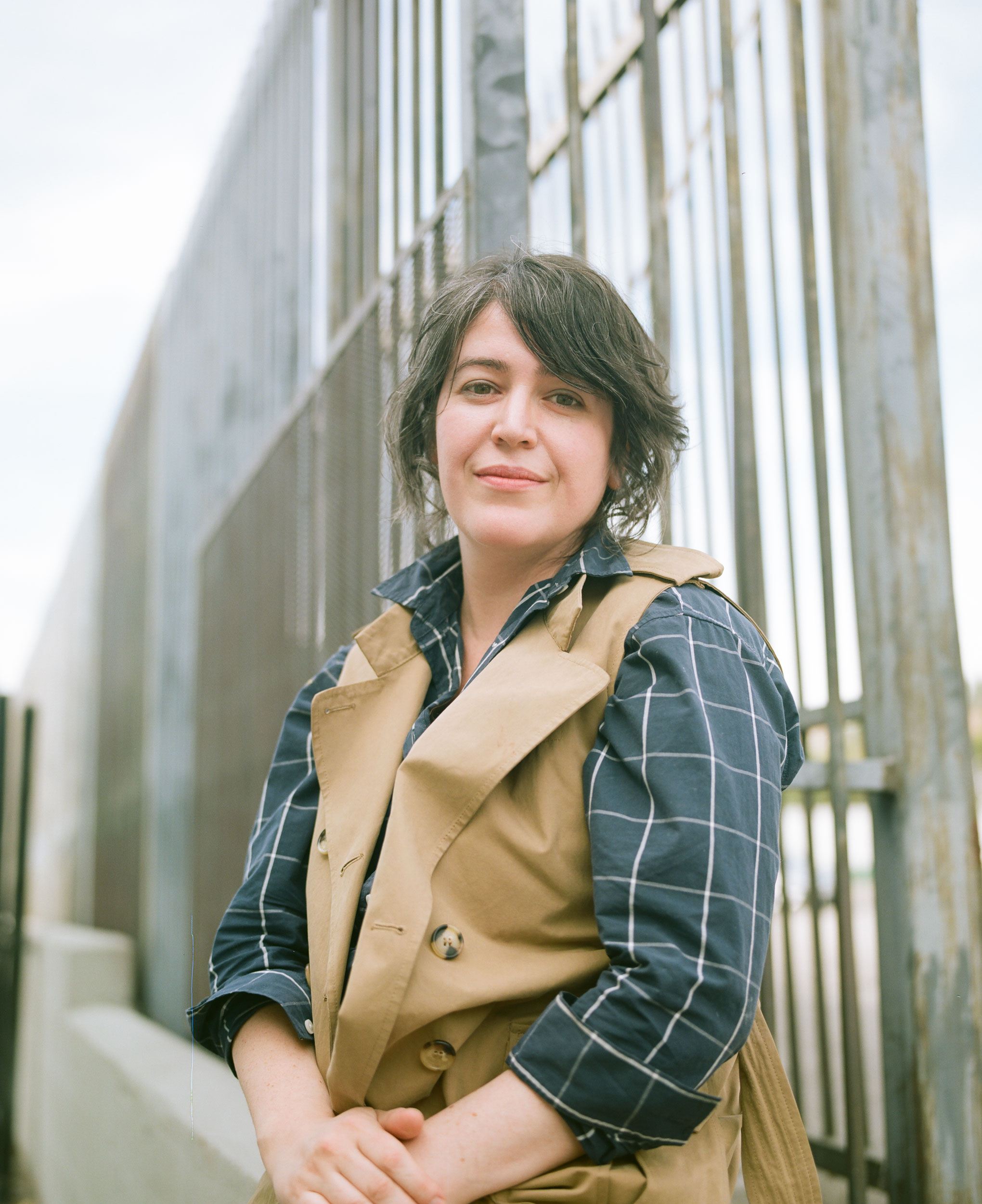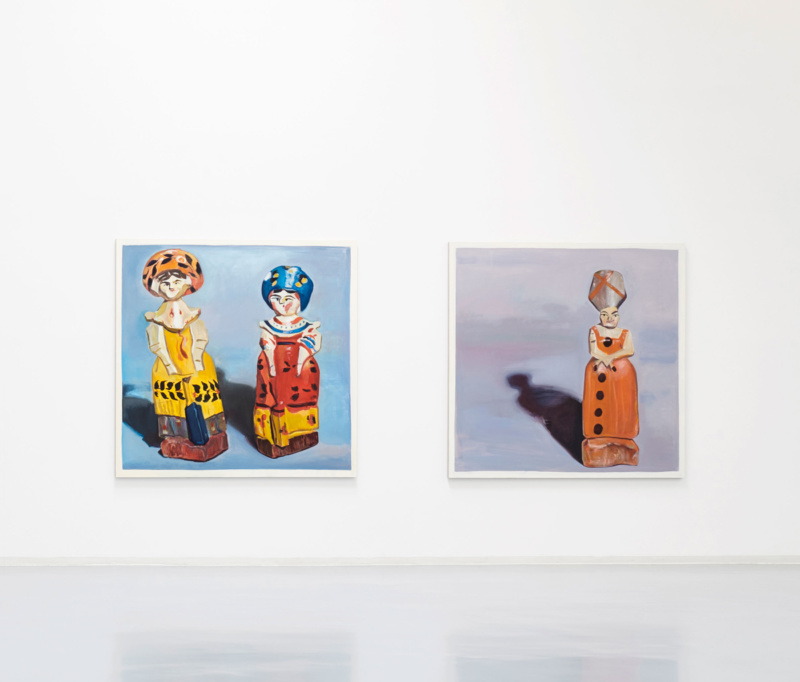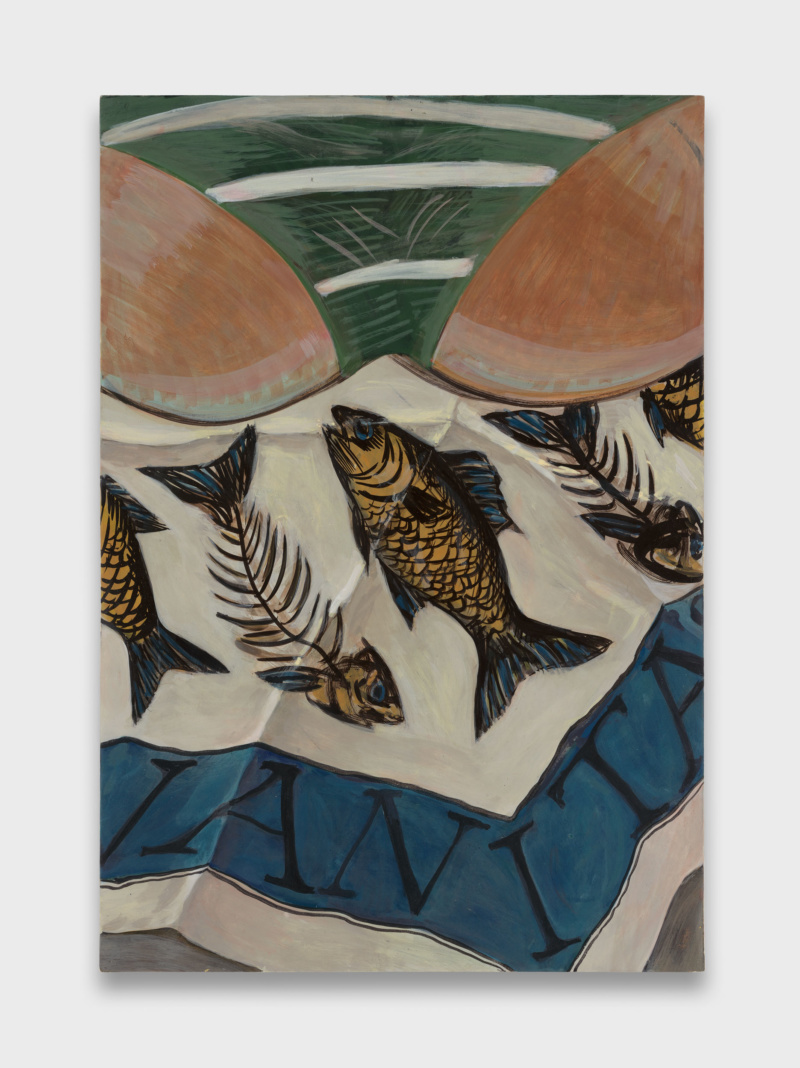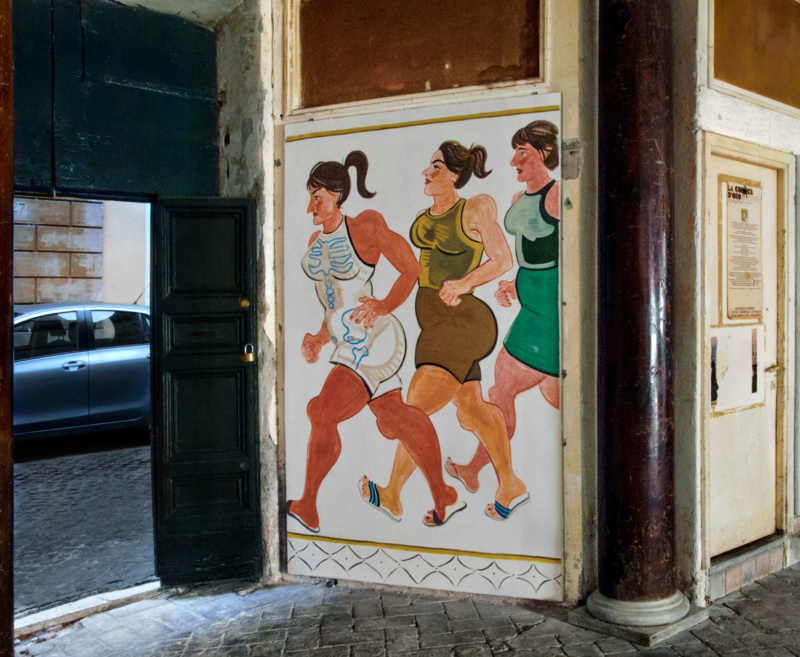
Ella Kruglyanskaya paints women with agency. The scenes depicted—the creative process, social interactions between women, poses evocative of a glamorous sexuality— gesture towards the fraughtness of being a woman in the world, with bodies as sites for an unfolding drama. Yet, even as Kruglyanskaya’s colorful, voluptuous women are acted upon, they are also actors of the narrative in each of her paintings— their emotional responses are honored as the subject matter. Each painting feels both intimate and immense. Born in Latvia, Kruglyanskaya immigrated to Philadelphia at 17 and attended an arts high school before studying painting at Cooper Union where she earned her BFA and then went on to Yale for her MFA. She moved to Los Angeles earlier this year, and finds that the city offers the necessary space for creativity. “It feels almost like a fantasy space where you can project onto,” she says, “it’s a place where imagination can happen.”
It is partially Kruglyanskaya’s sense of imagination that allows her to paint sexualized and performative women without adding to their misrepresentation. “I draw from imagination,” she explains over breakfast at Kitchen Mouse, a health-centric spot near her Highland Park studio. “I don’t use any other sources when drawing the women. If you draw from your head, you eliminate a lot and end up with something like a mental note to self, since drawing is so much like handwriting. I can get ideas out without stopping myself.”

At her studio, Kruglyanskaya introduces me to the works in progress for her January show at Gavin Brown’s Enterprise in New York City. To the side of each painting is the drawing on which it is based. The transition from the sketches to her characteristic big, bold strokes is seamless, and I am especially taken by several paintings of a pouty, circular woman in various states of creative frustration, clutching paint brushes and art supplies. This protagonist (she prefers the term over subjects or characters), is called “Art Wench”—“my own crisis represented,” Kruglyanskaya says.
A greater crisis of womanhood and the encumberment of attempting to portray it are also themes in the work. In a particularly arresting painting-in-progress, a protagonist set against a bubblegum pink background holds up an object to obstruct her face. Two menacing hands in the frame appear to reach toward the woman’s body as if they are going to grab her from below and her side. The piece makes me laugh, but nervously so. Kruglyanskaya’s work masterfully blends humor and emotional communicability. To her, vanity is essentially a reminder of death (“all of it will have been in vain”), and somehow, there is a great deal of humor to be found in memento mori.

Adjacent to Kruglyanskaya’s paintings of women are the beginnings of a new series of still-life paintings of objects. Childlike in their imaginative qualities, three nutcrackers sit next to ceramic dolls and a horse-drawn carriage toy. The paintings also include other depictions such as pages from a book of photographs of objects, elements that also appear in her paintings of women.
While Kruglyanskaya’s paintings are often called “cartoonish,” she insists that they are anti-style. “The difference between style and the way a certain thing looks,” she explains, “is that a style implies that you chose something because it’s a choice of taste, and you decided that is good, and you’re going to repeat it over and over. I’m not interested in that. All the elements of my paintings happen to look they way they do not because I like that look, necessarily, but because of some other reason. There’s some other logic that goes on.”

The distinction is significant. Kruglyanskaya’s paintings are “cartoonish,” but the aesthetic seems to have been chosen deliberately to honor the content. What better way to demonstrate the potent physicality of women’s existence and the almost caricature-like dramas that accompany living in a female body? There seems no greater manner to acknowledge the agency of protagonists that refuse to be reduced by outside influences.
As I make my way to exit the studio, we discuss Elena Ferrante, a writer we mutually admire, who was established as a point of connection before our interview. “I guess in some ways,” she says, “we are similar in that we’re depicting this narrow, lived point of view that feels incredibly true.”
Kruglyanskaya’s specificity yields expansive results and creates a rare space of self-possession for female protagonists in light of anything else that might invade their frame.



